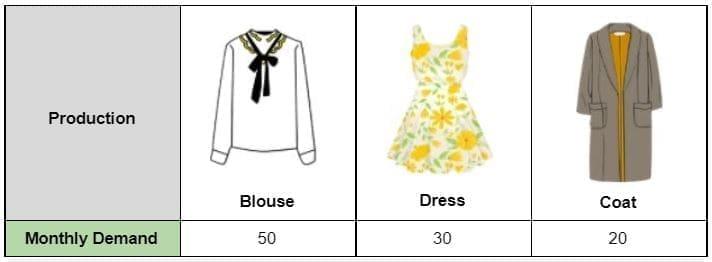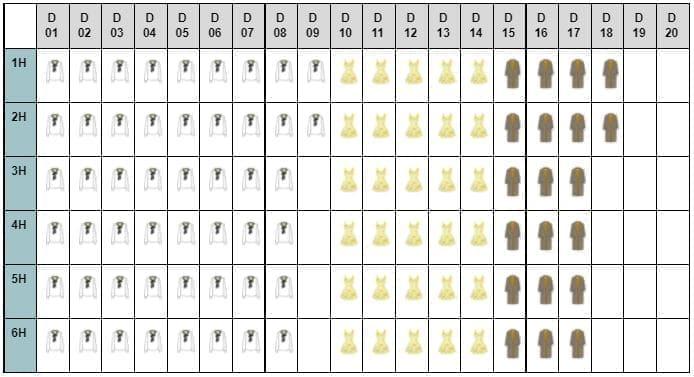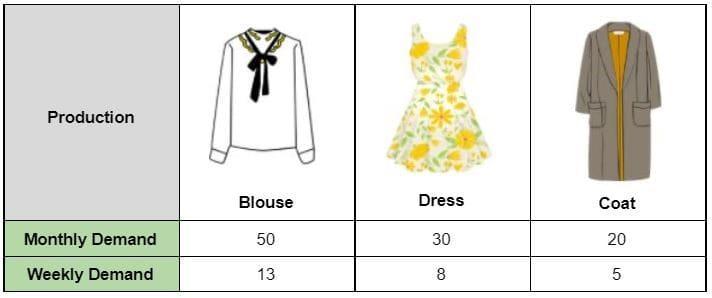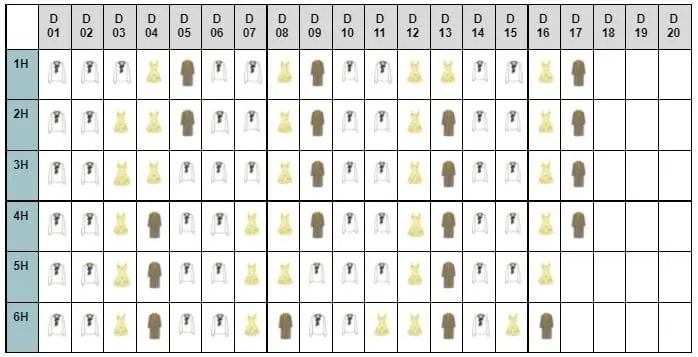What is Heijunka?
Heijunka is one of the thirteen pillars of the Toyota Production System and was established to save production costs and reduce the unevenness in a production process. It is a Japanese term for “leveling” which allows organizations to optimize their inventory management system in order to meet customer needs and depend on customer buying rates. It is a lean manufacturing method that helps reduce overproduction by processing orders based on customer demand and avoiding bulk production in batches.
What are the Advantages of Implementing Heijunka?
Heijunka in lean manufacturing aims to improve production workflow to better match the customer orders, reduce wastes, and minimize the chance of overburden. It helps the organization to achieve the following:
- efficiently meet customer demands;
- reduce inventory needs due to lesser batching process;
- decrease capital costs;
- increase profitability; and
- minimize manpower issues.
Implement Heijunka
Stay on top of your production workflow with our digital platform.
Get Started for FreeTwo Ways of Leveling Production
Proper implementation of Heijunka provides predictability, flexibility, and stability in the organization. It helps level the demand, decrease changeover time, and average the production volume and type in the long term. There are two ways of leveling production using the Heijunka concept, it can be implemented by volume or type.
- Leveling by Volume – deals with the number of items per type of product produced in each batch. It helps to see what products should be prioritized according to customer demand.
- Leveling by Type – adds different sequences of what product is being produced in every batch. It maintains the needed variety of products to be produced on a weekly or monthly basis.
Heijunka Example
Scenario: A garment manufacturing company is producing different types of women’s clothes that include blouses, dresses, and coats and there is a demand for 100 products in a month. The operation is Monday to Friday for 6 hours per day. Each product requires 1 hour to finish in production.

In normal manufacturing production, they intended to produce products in batches and prioritize the production of the product with the higher demand. What they will do is produce blouses until they meet the monthly demand, then proceed to the next item in the line. The production pipeline would look like this:

In this kind of production process, they saw an issue in terms of customer demand. What would they do if the customer ordered 1 blouse, 1 dress, and 1 coat?. In this type of production pipeline, the customer can get her order by day 15 as the production of the coat will start on day 15. Also, what if the demand for coats increases due to weather changes? By implementing the Heijunka concept which aims to level the production, instead of producing products by batches based on monthly demand, they divide it into weekly production and create a variety of products in a week to sustain the demand of the customers on a weekly basis.

The production would look like this:

By doing this the team can produce the customer order of 1 blouse, 1 dress, and 1 coat on day 4, whereas in the previous case it can be delivered on day 15. On the other hand, if the demand changes in the next weeks, they can simply change the production pipeline and create a new set of lined up products to be produced based on trend and customer demand.
In implementing the Heijunka concept, the organization should also consider the factors that would affect the production timeline including the concept of Single-Minute Exchange of Dies (SMED). It would help in analyzing the situation if it would be difficult or it would take more time for operators to switch on producing one product into another than the usual time it takes.
Frequently Asked Questions (FAQ)
Heijunka is used to leverage production and establish a continuous workflow. In lean manufacturing, it seeks to reduce the lead time and value customer satisfaction. Learning more about Heijunka allows organizations to take a step toward lean manufacturing. Here are the answers to the most frequently asked questions.
- How to pronounce Heijunka?
Phonetically, Heijunka is pronounced as “hi-JUNE-kuh” with a stress on the capitalized syllable. - Is Heijunka a pull system?
Heijunka helps minimize waste (Muda) through a pull system that requires materials to be replaced once it has been used. Pull systems reduce production costs by not purchasing materials when it is not needed, even if the price is cheaper and can be used as a stockpile for later. It helps remove the waste found in transporting or stocking unused items. - What is Heijunka in Toyota?
Toyota Motor Corporation implemented Heijunka in their manufacturing process to solve the issue of unsustainable batching and the inability to continuously respond to irregular orders without difficulty from uneven productivity levels. The Heijunka concept is used by assembling a combination of models within each batch, and ensuring that there is an inventory of products corresponding to the variability in customer demand. - What is the Heijunka box used for?
The Heijunka box or Heijunka board is a tool used to represent the production schedule that is leveled by volume or type. It helps the organization in prioritizing the production output based on the Heijunka principle.
How SafetyCulture Can Help You Apply the Heijunka Method
The Heijunka concept largely depends on customer demands and product inventory. Performing product stock inventory using pen and paper methods can be burdensome and prone to damage or loss. But, you can take advantage of technology with SafetyCulture (formerly iAuditor), a cloud-based inspection app that can be used to replace paper forms. With SafetyCulture you can:
- Use mobile or web platform
SafetyCulture is an inspection app that can be used through the web and mobile platforms. Mobile devices require a minimum of 2GB of Random-access memory (RAM) and web browsers support connections using TLS 1.2 or above to keep a secured communication. - Create and customize templates
Use our ready-to-use inventory audit template or check out our Public Library of free checklist templates. You also have an option to convert your existing PDF, Word Document, Excel, or PowerPoint files into SafetyCulture checklists for free up to 3 files. - Schedule the inventory audit
Automate reminders and be notified of inventory tasks to ensure that team members will start and complete their assigned tasks. You can also train employees on the app on the proper auditing and production procedures. - Document inventory audit
Record inventory audits anytime even when you are offline. All data will automatically sync when you are back online. - Assign corrective actions
Easily assign actions to appropriate members of the organization to implement immediate rectifications. You can provide all relevant context, evidence, and set the priority level and the due date to ensure the assigned person understands what needs to be done. - Access, review, and share reports in real-time
Instantly share your inspection reports to any member of the organization, you have an option to send reports on the mobile app to specific people via email. All data is automatically stored in the cloud, which you can access anytime, anywhere.
Generate reports right after inventory audits to ensure Heijunka flow is set up accordingly. Maximize the use of technology to improve the quality of work and implement lean manufacturing effectively. Get started with SafetyCulture’s ready-to-use template.




